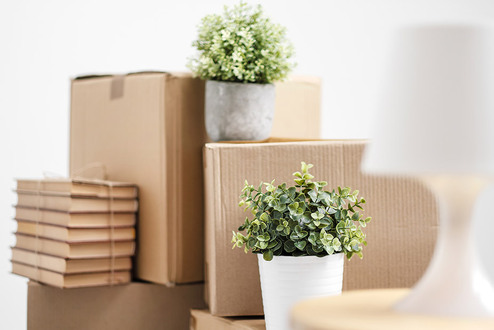

28
Feb,2019
If there’s one thing that those who are moving want to keep more than anything else – after their pets, of course – it’s their plants. Many have spent years cultivating their plants and enjoy having them in their home. It’s only natural that they want to have them along on moving day.
The issue, though, is the plants themselves. Depending on the type of plant, they might be very sensitive to changes in location, light, and temperature. All plants can be this way to a certain extent.
Still, it’s worth making the best attempt to move the plants. The following offers some advice on ways to make the move go smoothly and give you the best chance of moving your plants successfully.
At least three weeks before your move, consider transferring any plants in clay or other easily breakable pots into plastic pots. This will lessen the likelihood that the plants get damaged. Make sure the new pot is about the same size, as moving plants into a bigger or smaller pot may damage certain plant species. Also, hydrate your plants well the day before you dig up their roots to transfer them. This can help them handle the switch to a new pot better.
Another task before the move is to prune your plants, especially if it’s been a long time since their last pruning (we all forget sometimes to keep up with plant pruning). In addition to making your plants more attractive and healthier, pruning also makes plants more compact and easier to move. This is an excellent time to check your plants for insects or signs of disease so that you can treat them before the move.
Some people simply put the plants in their vehicle in the pots. If you have room and they are secure, that can work. For a safer approach, put the plants in a box where the bottom is lined with packing material except for a circular area to put the base of the pot. The pot should fit snugly and not wiggle too much. Once the plant is in the box, just close the box flaps loosely, allowing the plants to get air.
Much like pets, plants are going to be your companions in the car or truck cabin when you move. You’ll want to wait until just before departure to load your plants, so they spend that much less time in the vehicle. Don’t put plants in the trunk unless it’s absolutely necessary. The lack of fresh air and the increased temperature (or decreased in cold weather) can harm the plants, sometimes fatally.
If you are moving a long distance, you’ll want to unpack the plants each night at your hotel or motel and let them get more air and light. This is also a good time to water the plants if they look especially dry. If not, you can hold off watering until you reach your new home.
Congratulations, you got the plants to your new home! Once you are there, make a point of replanting your plants within the first few days, especially if you are replanting them in the yard. You’ll want the plants to have a chance to quickly assimilate to the light and temperature of its new surroundings.
One last issue to keep in mind are state regulations on transporting plants. Some states, including Florida, are well known for having more stringent rules on what plants you can or cannot transfer into the state. Some may require you get the plants inspected and are given a certificate indicating you are eligible to transfer the plants.
Keep these tips in mind when moving your plants and it can improve your chances for success. Having your plants in your new home will give you a sense of comfort – and make your new home even more welcome.
Photo Credit:
Strelitzia Nicolai – Giant White Bird Of Paradise from the blog post “32 Beautiful Indoor House Plants That Are Also Easy To Maintain“